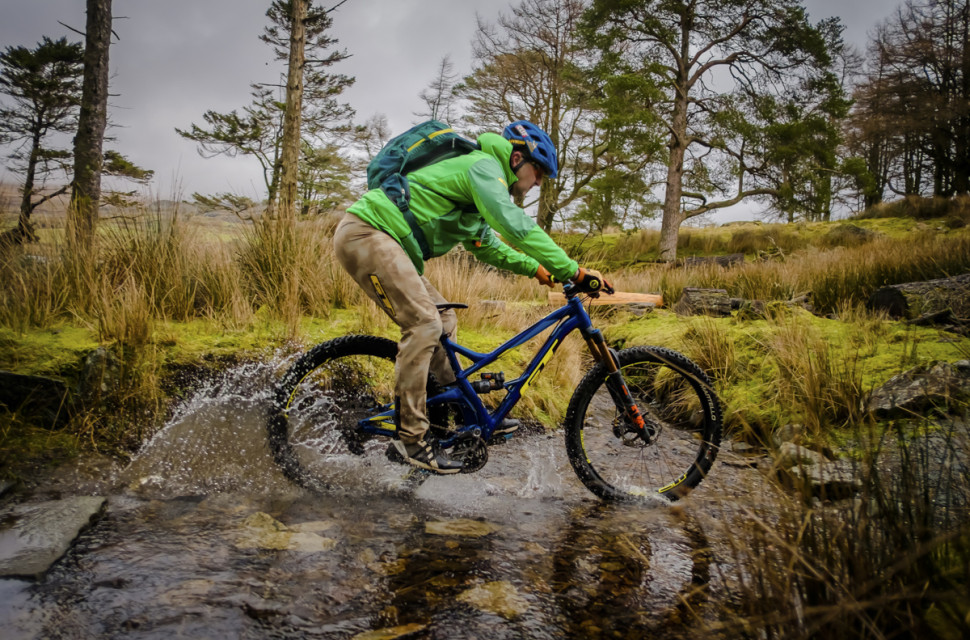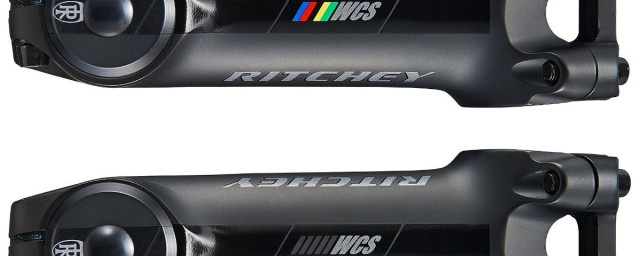GT Bicycles – the story of an iconic marque

[Words and photography of Hans Rey by Steve Thomas]
Back in 1972, Gary Turner set out to make a durable BMX frame for his son Craig. That frame soon caught the eye of other youngsters at the local BMX track – and so, he made a few more. At that time most kids were hitting the BMX tracks on bodged Schwinn Stingrays, which were not really up to the job, hence Turner brought his engineering experience and theory gained from welding drag racing cars to create his first Gary Turner-branded BMX frames.
- On and off the record with Kevin Vermaak - Cape Epic founder
- On and off the record with Katy Curd
- On and off the record with Lachlan Morton
In fairly short order he realised he was on to something, and local bike shops began asking him to supply frames for them. Among this growing list of customers was Anaheim bike shop owner Richard Long – in 1977, he started working in partnership with Turner. In 1979 the duo officially incorporated GT Bicycles Inc. with Turner heading the engineering side and Long taking over the business and marketing of GT.
Things took off fast for GT, and in 1980 the company launched the GT Pro, its first full BMX bike, took out its first magazine ads and signed the first sponsored BMX riders. Through the 1980s, GT thrived as a BMX bike builder and acquired a handful of other BMX-related brands and a distributor, though BMX was slowly fading as far as demand was concerned.
By the mid-1980s, the brand started to tip-toe into the emerging mountain bike market and also contracted a young Swiss trials rider named Hans Rey, who had set his stall out in California and was hopping over it in search of stardom – and mountain biking was arguably where both GT and Rey were to find just that.
During that first, dare we say “golden era” of mountain biking was where GT made its name in bigger wheel terms. The brand had a string of top racers shredding up, down, and around in their familiar blue, white and yellow striped team colours. From early greats like Julie Furtado, Brian Lopes and Mike King to the downhill racing GOAT of Nicolas Vouilloz, GT and its ground-breaking and rock-levelling GTS and LTS bikes were at the forefront of technological breakthroughs within the sport.
GT had made its mark globally and had a particularly strong presence in the UK, where Yate-based Caratti Sport had established the brand as a major force in the land, which is, perhaps, why GT remains a cult-like and honoured marque in the country. During their long and successful racing heyday, many a British rider also represented GT, including cross-country ace of the 90s David Baker and gravity stars such as the Athertons and Marc Beaumont. Globally, the brand was celebrating monumental success with a roster that included South African Burry Stander who raced on the Zaskar platform on the Mountain Bike World Cup circuit.
Where did it all go rubber side up?
The global bike industry has had a rough ride in the past few years, and many classic and lesser-known brands, retailers and manufacturers have bitten the hard dust. Unfortunately, we could well imagine that the general global economic state and general instability around the world of late will see more following suit in the not-too-distant future – hence, this is not a GT “thing” – it is a harsh global reality of the present time and economic climate.
Gary Turner and Richard Long sold their controlling shares in GT back in 1993 to a US-based investment firm, which led to GT going public in 1995, when the brand was very much at its peak in terms of sporting prominence and awareness.
Like many bike brands, GT has had a series of ownership changes over the years, and few investment companies and groups now own a very large number of bike brands around the world. In the case of GT, the untimely death of Richard Long in a motorcycle accident in 1996 was also a huge blow, not only to friends and family but to the company and its directive, and a book should be released later this year as an ode to Long and the rise of GT.
Even so, the brand continued to innovate, and of late, the Grade gravel bikes, with a distinct GT flavour, have been a sweet success, and things were looking rosy for the brand. In 2022 Dutch company Pon Holdings acquired Dorel Sports – the company that then owned GT, Cannondale, Mongoose, Schwinn, Charge and Caloi. Pon owns several other brands, including Cervelo, Focus, Santa Cruz and Juliana. In early 2023 GT was relocated back to California – going back to its roots and also hired British bike industry veteran Clive Gosling to head the marketing (who also recently left GT), this was envisaged to be a grand revival of the brand. Sadly, just before Christmas GT announced that several staff would be laid off, some athlete sponsorships would not be renewed, and we also understand that production will be temporarily paused whilst the current inventory is sold.
Is this the end of GT as we know it? Well, that’s hard to say right now – Pon has great experience within the bike industry, and GT is still a prominent and respected brand. As such, we cannot see it heading the way of some older legacy bike brands – that of becoming little more than a headage on a supermarket bike. Sure, there will be uncertainty ahead, and a few major shifts in direction are likely in the coming year.
Just how GT will emerge and be refined or thinned down is hard to predict, but we all hope that its great legacy will see it through and that the good times will return for GT.
Hans Rey’s wheely long GT ride
The name most associated with GT is Hans Rey, a legend of trials and mountain biking who has been sponsored by GT since the late 1980s. This has made him the longest-serving sponsored mountain biker around. We thought it fitting to ask the man himself about his long ride with GT.
ORCC: How did your initial intro to GT come about, and what scale was the company back then?
Hans Rey: When I first came to America in 1987, Kevin Norton who invited me, and who also was the US National Trials Champ, wanted to grow the sport of trials. He was riding for Haro and wanted other bike brands to get behind the sport. He introduced me to Penny Westman, who then introduced me to GT. I got a small $250 per month contract (which paid my rent, almost).
GT was, at the time, one of the (or the) leading BMX brands, and it was just starting to get seriously into MTB. I was to be one of the founding members of Team GT. At the time GT had three different buildings in Huntington Beach (not sure how big they were financially), soon after they moved into a big new building and the MTB thing gained momentum. Eventually, the company launched the legendary Zaskar in around 1990. Then they bought Riteway distribution, and by the mid-90s was the #1 MTB brand.
ORCC: The brand was huge in the 90s, what do you think lost its prominence?
HR: At that time we were number one, it had lots (maybe everything) to do with Richard Long, one of the brand's co-founders, he was the president and the brains and drive behind the brand. Right after the brand went public, Richard tragically died in a motorcycle accident. The brand was never the same again; Richard was unreplaceable, and too many ownership changes came thereafter. It was a rollercoaster from then on, but it still is a super cool and strong brand.
ORCC: You've been with GT for your whole career, through several new owners and restructurings. It all looked positive a short while back, were you surprised by recent events, and what does that mean to you personally?
HR: Yes, this marks my 38th year with GT, it is family. The recent announcement was a surprise since GT was on a great comeback, and promising things had happened in the past two years. We will see what the next chapter holds for GT – and me, but I’m currently still under contract and moving forward with my projects as usual (just to clarify some rumours, as far as I know, no riders were fired; Pon just didn’t renew any contracts that were up at the end of 2024. Fortunately, mine wasn’t up).
ORCC: Through you, and others, GT has a cult-like legacy following - has that appealed to an older generation more than younger and newer riders?
HR: I think it appeals to all generations, and many people had their first biking memories on a GT BMX or MTB. The reason the older generation maybe appreciate the brand more is because they were there at their height, they all experienced that spark and the exciting times.
The 90s were a special time, and everybody who got to experience this, and who was part of it will forever also remember GT and all the cool things the brand was involved in; like the first proper functioning full suspension bikes – the RTS and LTS, before that the Zaskar, Team GT and all its legendary riders, the events we sponsored, and last but not least the marketing and ad campaigns that marked the era.
ORCC: Where do you see things going from here with GT?
HR: Time will tell, I’m positive there could and should be a happy ending/new beginning.












1 comments
I love Hans Jorg Rey, but he is wrong about GT as a brand in the last decade.
They might still be making okay bikes, but they totally lost their relevance. Old people like the brand for what it was, young people see it as just one of the many brands making bikes.
And to be honest, as someone who was into mountain biking from the beginning (and who still rides nineties bikes exckusively), I can only shrug about brands like GT going down. Selling your brand to investor firms simply means you sell their soul too, and that hardly ever bodes well for the company. Cannondale seems to be doing okay, but it basically became a different kind of bike brand.
GT has been gone for a long time already for most, there is no emotional attachment anymore.